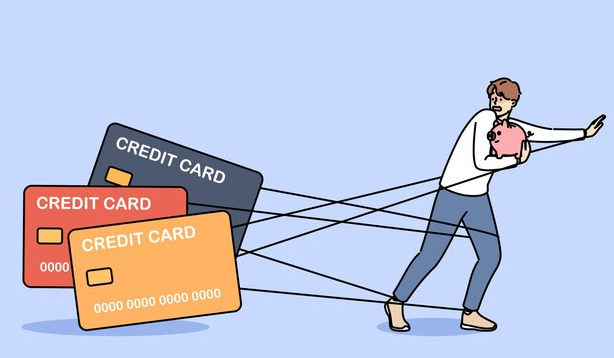Is credit card churning a smart strategy or a future problem?
Credit card churning is a financial strategy where individuals sign up for multiple credit cards to take advantage of generous sign-up bonuses. These bonuses often include points, miles, or cashback rewards after meeting a minimum spending requirement. Once the bonus is secured, the card is either closed or left inactive to avoid paying annual fees.
For some, this technique feels like an easy way to travel for free, earn extra cash, or maximize financial benefits. However, there are risks involved that many fail to consider. Banks have implemented measures to curb excessive churning, and careless management can lead to credit damage or even financial instability. So, is credit card churning a smart money hack or a ticking time bomb?
How credit card churning works?

Credit card companies offer welcome bonuses as an incentive to attract new customers. These bonuses can be extremely valuable, with some offering enough points for free international flights or luxury hotel stays. Churners strategically open new accounts, spend the required amount to earn the bonus, then move on to the next card.
The key to successful churning lies in careful planning. Many churners maintain spreadsheets to track applications, spending deadlines, and potential account closures. By managing these details meticulously, they avoid unnecessary fees while maximizing their rewards.
However, banks are aware of churning practices and have implemented restrictions to limit excessive applications. Chase, for example, has the 5/24 rule, which restricts new card approvals if a customer has opened five or more credit cards in the past 24 months. Other issuers have similar policies to discourage individuals from taking advantage of their promotions.
Despite these barriers, experienced churners find workarounds. Some use business credit cards, which often have separate eligibility criteria. Others space out applications carefully or rely on reconsideration calls to negotiate approvals. While these tactics may work temporarily, issuers constantly update their policies, making churning an evolving challenge.
Potential benefits: maximizing rewards efficiently
The biggest appeal of credit card churning is the potential for high-value rewards. Many individuals have used this strategy to fund luxurious vacations at a fraction of the cost. By earning sign-up bonuses across multiple cards, they can accumulate enough points for first-class flights, upscale hotels, or even fully paid vacations.
Beyond travel, churning also offers other financial advantages. Many cards provide cashback on everyday purchases, which can be used to cover expenses or save for future investments. Some churners leverage these rewards to offset large purchases, effectively reducing their financial burden.
Additionally, credit card companies frequently offer 0% APR introductory periods, allowing cardholders to make interest-free purchases for several months. Some churners take advantage of this feature to manage cash flow or pay off other high-interest debts strategically. However, this requires discipline—failure to pay off the balance before the promotional period ends can lead to costly interest charges.
Churning can also improve credit scores in certain situations. Keeping old accounts open increases the length of credit history and boosts the overall credit utilization ratio. If done responsibly, this can enhance an individual’s credit profile, making it easier to secure loans and mortgages in the future.
Risks and drawbacks: is it really sustainable?
While the rewards of churning are appealing, the risks should not be ignored. One of the biggest concerns is the impact on credit scores. Every time a person applies for a new credit card, a hard inquiry is placed on their credit report. Too many inquiries in a short period can temporarily lower credit scores, potentially affecting loan approvals.
Closing accounts also presents risks. Since part of a credit score is determined by the length of credit history and available credit, shutting down multiple accounts can reduce both factors. This may lead to a drop in credit scores, which could impact future financial opportunities.
Another major pitfall is the temptation to overspend. Meeting the minimum spend requirement for a sign-up bonus often requires significant purchases within a short time frame. Some churners end up buying unnecessary items just to qualify for rewards, leading to unmanageable debt. If they fail to pay off balances in full, high-interest rates can quickly erode any benefits gained from the bonus.
Additionally, banks have been increasing anti-churning measures. Some issuers flag frequent churners and deny future applications, even if they meet all stated requirements. In extreme cases, banks have shut down accounts entirely, confiscating unused rewards and restricting access to future products.
Managing multiple credit cards also requires strong organizational skills. Missing a payment or forgetting an annual fee can lead to costly penalties. For individuals who are not financially disciplined, churning can quickly spiral into a source of stress rather than a profitable endeavor.
How banks are cracking down on churners
Banks have caught on to churning strategies and have been implementing stricter policies to limit abuse. Many now enforce lifetime restrictions on bonuses, meaning that once a person has received a sign-up bonus for a particular card, they are not eligible for it again.
Some issuers have also introduced spending-based rewards structures, making it harder to extract value from short-term use. Instead of offering a large upfront bonus, they may require sustained spending over a longer period to earn full benefits. This discourages churners from closing accounts immediately after receiving rewards.
Additionally, banks track customer behavior and can flag accounts that show patterns of churning. If an individual repeatedly opens and closes accounts within a short timeframe, they may be denied future approvals. In severe cases, banks may even shut down multiple accounts simultaneously, leaving churners with little recourse.
For those considering churning, understanding these restrictions is crucial. While it is still possible to earn rewards, the landscape is becoming increasingly challenging. Without careful planning, churners may find themselves locked out of lucrative opportunities.
Who should and shouldn’t churn?
Churning is not for everyone. It requires meticulous organization, financial discipline, and a willingness to adapt to changing issuer policies. Those who are already responsible with credit and have a strong understanding of financial management may find churning a valuable strategy.
On the other hand, individuals who struggle with debt, frequently miss payments, or have difficulty tracking multiple accounts should avoid churning. The risks often outweigh the rewards for those who are not financially stable.
Furthermore, individuals planning to apply for major loans—such as a mortgage—should be cautious. Frequent credit inquiries and account closures can raise red flags for lenders, potentially affecting loan approvals and interest rates.
Graduated and master's student in History. Fanatic of books and series. Editor since 2023.




